This article needs additional citations for verification .(September 2020) |
This article needs additional citations for verification .(September 2020) |
| Genre | Characteristics | Era |
|---|---|---|
| Acid jazz [1] [2] | Combined elements of soul music, funk, disco, including looping beats and modal harmony | 1980s–1990s |
| Afro-Cuban jazz | It mixes Afro-Cuban clave-based rhythms with jazz harmonies and techniques of improvisation. | 1940s -> |
| Avant-garde jazz | A style of music and improvisation that combines avant-garde art music and composition with jazz. It originated in the 1950s and developed through the 1960s. | 1950s -> |
| Bebop | Bebop or bop is a style of jazz characterized by a fast tempo, instrumental virtuosity, and improvisation based on a combination of harmonic structure and occasional references to the melody. | 1940s -> |
| Big band | 1910s -> | |
| British dance band | British dance band is a genre of popular jazz and dance music that developed in British dance halls and hotel ballrooms during the 1920s and 1930s. | 1920s -> |
| Cape jazz | Cape jazz (more often written Cape Jazz) is a genre of jazz that is performed in the southernmost part of Africa, the name being a reference to Cape Town, South Africa. | 1990s -> |
| Chamber jazz | Chamber jazz is a genre of jazz involving small, acoustic-based ensembles where group interplay is important. | 1960s -> |
| Continental jazz | Early jazz dance bands of Europe in the swing medium, to the exclusion of Great Britain. | |
| Cool jazz | Contrasts with the hard, fast sound of bebop. A more relaxed, subdued style, with more formal arrangements and elements of swing and classical. | 1940s–1960s |
| Crossover jazz | Artists mix different styles of music into jazz. | 1970s -> |
| Dixieland | Dixieland music or New Orleans jazz, sometimes referred to as hot jazz or early jazz, is a style of jazz music which developed in New Orleans at the start of the 20th century. Stylistically it is essentially a form of Ragtime, typically transposed for brass band, banjo and/or clarinet. | 1900s -> |
| Electro Swing [3] | Modern interpretation of Swing merged with EDM. Performances typically include both a live band and a DJ. | 1990s -> |
| Ethio-jazz | A specific form of jazz that evolved in Ethiopia in the likes of the music of Mulatu Astatke, also referred to as the King of Ethio-jazz. | 1950s -> |
| Ethno jazz | Ethno jazz, a form of ethno music, is sometimes equaled to world music or is regarded as its successor, particularly before the 1990s. An independent meaning of "ethno jazz" emerged around 1990. | 1990s -> |
| European free jazz | European free jazz is a part of the global free jazz scene with its own development and characteristics. | 1960s -> |
| Flamenco jazz | 1960s -> | |
| Free funk | A combination of avant-garde jazz with funk music | 1970s -> |
| Free jazz | Free improvisation is improvised music without any specific rules. By itself, free improvisation can be any genre, it isn't necessarily jazz. Free jazz musicians make use of free improvisation to alter, extend, or break down jazz convention, often by discarding fixed chord changes, tempos, melodies, or phrases. Ornette Coleman was an early and noted advocate of this style. | 1950s -> |
| Gypsy jazz | A style of jazz music often said to have been started by guitarist Jean "Django" Reinhardt in the 1930s. The style was originally called "hot club" or "hot jazz" and served an acoustic European interpretation of swing. The term "gypsy jazz" didn't appear until after the 1970s, when Sinti people adapted their folk music to emulate that of Django's. | 1930s/1970s-> |
| Hard bop | Incorporated influences from rhythm and blues, gospel music, and blues, especially in saxophone and piano playing. | 1950s -> |
| Indo jazz | Fusion of jazz with Indian music (see also Sitar in jazz and Jazz in India). | 1950s -> |
| Jazz blues | Although not a distinct style, this is typically used to refer to songs that include idiomatic "jazz" embellishments to the standard form, such as the use of extended harmony and chord substitutions. At a minimum, jazz blues usually include a ii–V progression in place of the simple V chord and a I–VI/vi–ii–V turnaround at the end of the form. | |
| Jazz-funk | Jazz-funk is a subgenre of jazz music characterized by a strong back beat (groove), electrified sounds, and an early prevalence of analog synthesizers. | 1970s -> |
| Jazz fusion | Combines elements of jazz and rock. Characterized by electronic instruments, riffs, and extended solos. | 1970s -> |
| Jazz poetry | 1920s -> | |
| Jazz pop | ||
| Jazz rap | Jazz rap is a fusion subgenre of hip hop music and jazz, developed in the late 1980s and early 1990s. The lyrics are often based on political consciousness, Afrocentrism, and general positivism. | 1980s -> |
| Jazz rock | The term "jazz-rock" (or "jazz/rock") is often used as a synonym for the term "jazz fusion". | 1960s -> |
| Jump blues | 1930s -> | |
| Kansas City jazz | Kansas City jazz is a style of jazz that developed in Kansas City, Missouri and the surrounding Kansas City Metropolitan Area during the 1930s | 1930s -> |
| Latin jazz | Draws heavily on salsa and merengue influences. Heavy use of percussion, including congas, timbales, bongos, guiros, and others. | |
| M-Base | 1980s -> | |
| Marabi | 1920s–1930s | |
| Mainstream jazz | A genre of jazz music that was first used in reference to the playing styles around the 1950s | 1950s -> |
| Modal jazz | Pioneered by Miles Davis, others. Characterized by use of modes, such as dorian modes. | |
| Neo-bop jazz | A comparatively accessible, "retro" genre that emerged in the 1980s as a stylistic reaction against free jazz and jazz fusion. Notably associated with Wynton Marsalis. | 1980s -> |
| Neo-swing | The name given to the renewed interest in swing music from the 1930s and 40s. Many neo-swing bands practiced contemporary fusions of swing, jazz, and jump blues with rock, punk rock, ska, and ska punk music or had roots in punk, ska, ska punk, and alternative rock music. | 1990s -> |
| Jazz noir [4] | A form of slow or erratic contemporary jazz. Jazz noir (also known as "doom jazz" or "dark jazz") is noted for its often somber, mysterious or even sinister tone. It takes inspiration from film noir soundtracks and dark ambient music. [4] | 1990s -> |
| Nu jazz [5] | Music that blends jazz elements with other musical styles, such as funk, soul, electronic dance music, and free improvisation. | 1990s -> |
| Orchestral jazz | Also known as "Symphonic Jazz" | 1920s -> |
| Post-bop | A genre of small-combo jazz that assimilates hard bop, modal jazz, avant-garde and free jazz without necessarily being immediately identifiable as any of those forms | 1960s -> |
| Punk jazz | The amalgamation of elements of the jazz tradition (usually free jazz and jazz fusion of the 1960s and 1970s) with the instrumentation or conceptual heritage of punk rock | 1970s -> |
| Ragtime | 1890s -> | |
| Samba-jazz | 1950s -> | |
| Ska jazz | Music derived by fusing the melodic content of jazz with the rhythmic and harmonic content of early Jamaican Music introduced by the "Fathers of Ska" in the late 1950s. It is sometimes considered a subgenre of Third-Wave Ska. | 1960s -> |
| Skiffle | 1950s -> | |
| Smooth jazz | In general a smooth jazz track is downtempo (the most widely played tracks are in the 90–105 BPM range), layering a lead, melody-playing instrument (saxophones – especially soprano and tenor – are the most popular, with guitars a close second) over a backdrop that typically consists of programmed rhythms and various synth pads and/or samples. | 1960s -> |
| Soul jazz | Draws heavy influences from hard bop, blues, gospel, and rhythm and blues. It is often characterized by organ trios. | 1950s -> |
| Spiritual jazz | 1960s -> | |
| Straight-ahead jazz | A form of Jazz created in the 1960s with roots from the previous two decades. It omits elements from rock music and free jazz that began to appear in this period, instead putting more emphasis on acoustic instruments and a more conventional sound. | 1960s -> |
| Stride jazz | A style of jazz piano which incorporates left hand techniques from ragtime music, except the left hand spans a greater distance on the keyboard. | 1920s -> |
| Swing | Big band arrangements, always swung. Pioneered by Duke Ellington, Count Basie, and Benny Goodman. | 1930s–1950s |
| Third stream | The fusion of the jazz stream and classical stream. | 1950s -> |
| Trad jazz | Short for "traditional jazz", refers to the Dixieland and ragtime jazz styles of the early 20th century | |
| West Coast jazz | A less frenetic, calmer style than hard bop, heavily arranged, and more often compositionally based subgenre of cool jazz. | 1950s–60s |
Avant-garde jazz is a style of music and improvisation that combines avant-garde art music and composition with jazz. It originated in the early 1950s and developed through to the late 1960s. Originally synonymous with free jazz, much avant-garde jazz was distinct from that style.

Acid jazz is a music genre that combines elements of funk, soul, and hip hop, as well as jazz and disco. Acid jazz originated in clubs in London during the 1980s with the rare groove movement and spread to the United States, Japan, Eastern Europe, and Brazil. Acts included The Brand New Heavies, D'Influence, Incognito, Us3, and Jamiroquai from the UK and Buckshot LeFonque and Digable Planets from the U.S. The rise of electronic club music in the middle to late 1990s led to a decline in interest, and in the twenty-first century, the movement became indistinct as a genre. Many acts that might have been defined as acid jazz are seen as jazz-funk, neo soul, or jazz rap.
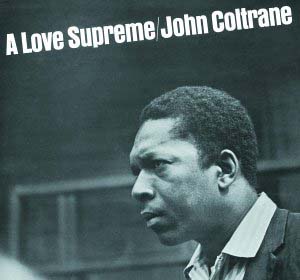
A Love Supreme is an album by American jazz saxophonist John Coltrane. He recorded it in one session on December 9, 1964, at Van Gelder Studio in Englewood Cliffs, New Jersey, leading a quartet featuring pianist McCoy Tyner, bassist Jimmy Garrison and drummer Elvin Jones.

Cookin' with the Miles Davis Quintet is an album recorded in 1956 by the Miles Davis Quintet in Rudy Van Gelder's studio in Hackensack, New Jersey, and released in July 1957. As the musicians had to pay for the studio time, their recordings are practically live. Two sessions on 11 May and 26 October 1956 resulted in four albums — this one, Relaxin' with the Miles Davis Quintet, Steamin' with the Miles Davis Quintet and Workin' with the Miles Davis Quintet.
Curtis Amy was an American jazz saxophonist.
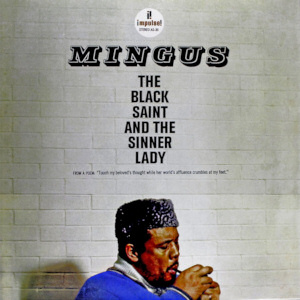
The Black Saint and the Sinner Lady is a studio album by Charles Mingus. It was recorded on January 20, 1963, and released in July of that year by Impulse! Records. The album comprises a single continuous composition—partially written as a ballet—divided into four tracks and six movements. It is widely regarded as one of the greatest jazz records of all time.
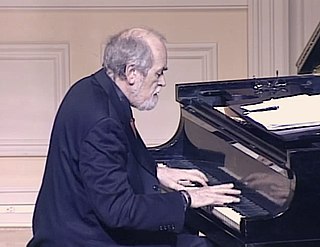
Roger Kellaway is an American composer, arranger and jazz pianist who has recorded over 250 albums, and composed over 20 film scores

Dinah Jams is the second studio album by vocalist Dinah Washington. It was recorded live In Los Angeles in 1954. Billboard in 1955 wrote: "The instrumental solos are excellent and the entire package is well recorded in a smoothly paced collection of hot and cool jazz."

Roland Pembroke Hanna was an American jazz pianist, composer, and teacher.
Richard David Cook was a British jazz writer, magazine editor and former record company executive. Sometimes credited as R. D. Cook, Cook was born in Kew, Surrey, and lived in west London as an adult. A writer on music from the late 1970s until he died, Cook was co-author, with Brian Morton, of The Penguin Guide to Jazz Recordings, which lasted for ten editions until 2010. Richard Cook's Jazz Companion and It's About That Time: Miles Davis On and Off the Record were published in 2005.

Art Pepper Meets the Rhythm Section is a 1957 jazz album by saxophonist Art Pepper with pianist Red Garland, bassist Paul Chambers and drummer Philly Joe Jones, who were the acclaimed rhythm section for Miles Davis at that time. The album is considered a milestone in Pepper's career.
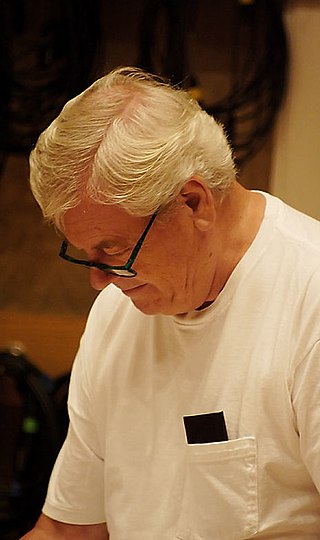
George Gruntz was a Swiss jazz pianist, organist, harpsichordist, keyboardist, and composer known for the George Gruntz Concert Big Band and his work with Phil Woods, Rahsaan Roland Kirk, Don Cherry, Chet Baker, Art Farmer, Dexter Gordon, Johnny Griffin, and Mel Lewis.
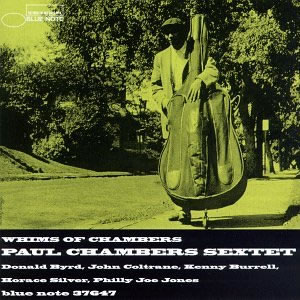
Whims of Chambers is a studio album by the Paul Chambers Sextet, recorded on September 21, 1956 and released on Blue Note circa January 1957. The sextet consists of trumpeter Donald Byrd, saxophonist John Coltrane, and rhythm section Kenny Burrell, Horace Silver, Chamber and ”Philly” Joe Jones.

Benny Green is an American hard bop jazz pianist who was a member of Art Blakey's Jazz Messengers. He has been compared to Bud Powell and Oscar Peterson in style and counts them as influences.

Arthur W. Hodes, was a Russian Empire-born American jazz and blues pianist. He is regarded by many critics as the greatest white blues pianist.
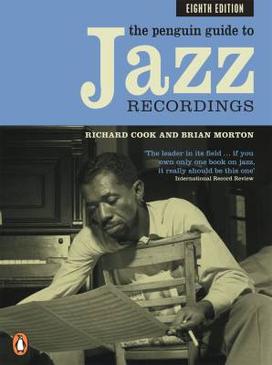
The Penguin Guide to Jazz is a reference work containing an encyclopedic directory of jazz recordings on CD which were currently available in Europe or the United States. The first nine editions were compiled by Richard Cook and Brian Morton, two chroniclers of jazz resident in the United Kingdom.
Harold Ashby was an American jazz tenor saxophonist. He worked with Duke Ellington's band, replacing Jimmy Hamilton in 1968. In 1959, he recorded backing Willie Dixon on the latter's first album, Willie's Blues.

Joachim Kurt Kühn is a German jazz pianist.
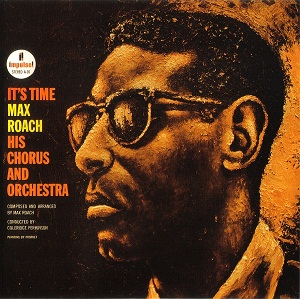
It's Time is a 1962 album by jazz drummer Max Roach, released on Impulse! Records which also features trumpeter Richard Williams, tenor saxophonist Clifford Jordan, trombonist Julian Priester, pianist Mal Waldron, bassist Art Davis, and a vocal choir conducted by Coleridge-Taylor Perkinson. Singer Abbey Lincoln appears on "Lonesome Lover".

You're Gonna Hear From Me is a live album by jazz pianist Bill Evans with Eddie Gómez and Marty Morell recorded at the Jazzhus Montmartre in Copenhagen in 1969 but not released until 1988 on the Milestone label. The same concert also produced the album Jazzhouse.